Pakistani Food Dishes: Basic Overview
Common Ingredients
Common Cooking Methods
Courses
Meals
Key Taste
Eating Etiquette
Meal Presentation
Culinary Festivals
Influence and Fusion
Popular Types of Pakistani Dishes
-
Curries
Pakistani curries feature rich gravies with meats like beef, chicken, or mutton, and a blend of spices such as cumin and turmeric.
Common ingredients include tomatoes, onions, and yogurt, creating a tangy, creamy sauce. Typically served with rice or flatbread.
-
Desserts
Pakistani desserts are mostly sweet, milk-based, and rich in flavor, using ingredients like milk solids, sugar, and ghee, often flavored with nuts and spices like cardamom.
These desserts are integral to celebrations and are usually garnished with nuts.
-
Fried dishes
Fried dishes in Pakistani cuisine are known for their crispness and savory taste, often made with gram flour, vegetables, and spices.
Popular as snacks or appetizers, they’re commonly served with chutneys or yogurt.
-
Grilled and barbecued dishes
Grilled and barbecued dishes in Pakistan are marinated in spices and yogurt, known for their smoky flavor and tender meat.
Often grilled over open flames and served with naan, rice, and sides like salads and chutneys.
-
Rice dishes
Rice is central to Pakistani cuisine, with dishes ranging from spiced biryanis to simple pilafs, primarily using aromatic basmati rice.
These dishes are often garnished with fried onions, nuts, and raisins.
-
Stews
Stews are a key part of Pakistani cuisine, featuring slow-cooked meats with spices, sometimes with lentils or vegetables.
The slow cooking ensures tender meat and infused flavors, typically accompanied by bread or rice.
Pakistani dishes are delicacies popular in Pakistan, a South Asian country. While Pakistani dishes are strongly influenced by Indian cuisine, especially by dishes in North Indian cuisine, they are also subject to Central Asian, Persian, and Arab influences.
Another vital factor is Mughlai cuisine, which mixes Central Asian, Islamic, and indigenous Indian culinary traditions.
In predominantly Muslim Pakistan, halal principles dictate the suitable types of meat for consumption. Meat is the primary ingredient in local cuisine, contributing to Pakistani fare’s rich and hearty flavors. Slow cooking, frying, and grilling are popular ways to cook them.
Rice, lentils, fragrant spices, and dairy products, like ghee and yogurt, are staple ingredients in Pakistan. By contrast, vegetables have a more limited presence, marking a notable difference between Pakistani foods and popular food offerings in South Asia.
Thanks to its ethnic, cultural, and environmental diversity, Pakistan has many notable regional cuisines, each with its own specialties. The robust street food scene, with numerous snacks and finger foods, is another reason to love local cuisine.
For each Pakistani dish, I will go into its origin, popular names, main ingredients, preparation method, flavor, serving suggestion, and additional facts like history and prominent varieties.
Next, let’s learn more about traditional foods, the factors making them famous across the world, and how healthy they are. There are also deeper insights about common types of meat, popular vegetables used in this country, and some suggestions about drinking pairings with Pakistani foods.
32 Popular Pakistani Dishes with Filters
With 32 food specialties here, you can discover Pakistani cuisine in a comprehensive yet interesting way.
Using advanced filters like main ingredients, taste preferences, cooking methods, dish categories, etc., is a good tip for quickly searching for your desired recipes.
Moreover, there are some overviews of these most well-loved dishes, traditional, national, street food, and fusion options.
The national dishes of Pakistan are a proud representation of its culinary pride. Dishes like nihari and biryani are examples.
Reflecting Pakistan’s multicultural landscape, fusion dishes creatively blend local flavors with other influences from other cuisines.
Biryani
- Fusion
- National
- Traditional
Biryani is one of the best Pakistani foods that are made with rice. This versatile dish is a melange of aromatic rice, strong spices, vegetables, protein (like chicken, beef, mutton, eggs, etc.), and dried fruits (optional).
There are many variations of biryani in Pakistan, depending on different ingredients, regional influences, and preparation methods. The mixed rice dish was brought to the Indian subcontinent by the Muslim Mughal Empire and has long been a sought-after main dish and street food.
Sindhi biryani from Sindh province is Pakistan’s most popular biryani variant thanks to its seductive aroma and spicy taste. Meanwhile, Karachi biryani, hailing from the city of the same name, offers a balanced flavor profile.
Nihari
- National
- Traditional
Nihari is a famous dish that people in Pakistan have for breakfast and other main dishes. One of the most protein-rich Pakistani foods, nihari consists of beef, mutton, chicken, or goat shanks carefully stewed with various spices, especially long pepper.
The long cooking process ensures this Pakistani meat stew is deeply tender and flavorful, perfect for enjoying with naan bread. While nihari was invented during Mughal times in Lucknow, India, immigrants brought it to Pakistan following the 1947 partition of India.
The name “nihari” comes from the Arabic word “nahâr” for “morning,” as nawabs (Mughal princes) often had it for breakfast, a practice that many Pakistanis follow nowadays.
Haleem
- Fusion
- Traditional
Haleem is a classic Pakistani dish usually made by cooking barley or wheat, meat, and lentils. These ingredients are prepared separately before being cooked in liquid (such as broth, milk, or water) until they achieve a smooth, luscious texture.
Ideally, the ingredients in haleem should be indistinguishable from each other upon completion, but the stew mustn’t be a gluey mess. The thick stew boasts a deliciously rich flavor that goes well with many foodstuffs, like naan or fried onions.
Outside Pakistan, haleem is also a common sight in South Asia, the Middle East, and Central Asia, especially among Muslim communities. In fact, the stew was inspired by a similar Arab dish called harees.
Pakistanis eat Haleem year-round as a snack and main dish, especially during Ramadan and Muharram (the first month of the Islamic calendar).
Kebab
- Fusion
- Street Food
Kebab, or kabab, is a top-rated dish in Pakistan, where its presentation is different from common versions in other countries. This marinated and grilled/roasted dish of Ottoman origin is cooked on a spit or skewers elsewhere, but all kinds of grilled meat are called kebabs in the South Asian country.
Shami kebab is a variety made from minced meat, ground chickpeas, eggs, and spices. Chapli kebab is a delicacy made from minced meat and originating in the city of Peshawar in northwestern Pakistan.
“Chapli” means “flat,” referring to the round, flattened shape of the meat patties.
Seekh kebab is another fantastic Pakistani kebab made from minced meat (usually mutton) mixed with spices. But unlike chapli kebab, seekh kebab is shaped into cylinders and grilled on skewers.
Pakistan is also home to bun kebab, or anda shami, a famous street food item. Created in Karachi and Lahore, bun kebabs consist of shami kebab, chutney, and onions stuffed in grilled buns.
While other kebabs require naan, rice dishes, yogurt, or chutneys as side dishes, bun kebabs don’t.
Samosa
- Fusion
- Street Food
Samosa is Pakistan’s favorite fried snack, fast food, and street food. Samosas are triangular, with many layers of maida (white flour) dough as the covering and a sweet or savory mixture of various food ingredients as the filling.
Usual choices are mashed potatoes, lentils, minced meat, and raisins. Some versions even have no fillings and are instead dipped in sugar syrup. Many countries in South Asia, Central Asia, Southeast Asia, and East Africa also love this fried and filled pastry of Arab origin.
There are many samosa variants in Pakistan, especially in the Sindh and Punjab provinces. Karachi samosas are very spicy, with kaghazi samosa as a variety with a crispy, paper-thin exterior. Faisalabad city offers samosas in large sizes. In Lahore, spicy samosas with potato- or vegetable-based fillings are the norm.
In northern and western Pakistan, minced meat, like beef, chicken, or mutton, is the preferred ingredient of the filling of the fried pastry. Regardless of the varieties, freshly cooked samosas with chutneys or yogurt are staples in the local street foods scene.
Gulab Jamun
- National
- Traditional
Gulab jamun, or gulaab jamun, is a top-tier dessert in Pakistan. In fact, a Twitter poll conducted by the Pakistani government in 2019 suggested gulab jamun, literally “rose berry,” as the national dessert of the South Asian country.
Gulab jamun consists of berry-sized balls made from a dough of maida, khoa (milk solids), and sugar. The milk balls are deep-fried in oil or ghee, which caramelizes the sugar and creates a dark brownish-red shade for the dessert.
To complete gulab jamun, locals serve the fried milk balls in sugar syrup perfumed with rose water and spices like cardamom and saffron. Some crushed or shaved nuts on top are the perfect finishing touch to this sweet dessert.
Chicken Karahi
- National
- Traditional
Chicken karahi, or kadai chicken, is a popular Pakistani dish named after its cooking utensil. Karahi is a thick, wok-like frying pan used in South Asian cuisine. To prepare this chicken dish, people cook chunks of chicken in a tomato sauce full of spices, like chili peppers, cumin, and garlic.
Chicken karahi typically goes with naan, roti, or other bread types ideal for soaking up the delicious tomato sauce. Raita, a yogurt-based side dish, also helps temper the heat from the many spices.
Gosht karahi and prawn karahi are variations that replace chicken with goat/lamb and prawns, respectively.
Paratha
- Traditional
Paratha is a famous type of unleavened flatbread in Pakistan. The flatbread is prepared from an all-purpose flour-based dough and cooked on a tawa (frying pan) with ghee or oil to enhance its seductive aroma. Atta (whole grain wheat flour) or maida are traditional flour choices.
Thick and flaky parathas are available in many forms, such as triangles, rounds, or squares. When paired with eggs, yogurt, raita, or pickles, these unleavened flatbreads are common Pakistani foods for breakfast. Some versions even come with fillings, like boiled potatoes, minced meat, cauliflower, etc.
Besides parathas, there are a few other well-known flatbreads in Pakistani cuisine. Notable examples are chapatis/ rotis (thinner and less substantial than parathas) and naans (leavened and oven-baked flatbreads). These flatbreads are usually cooked in a tandoor (a large clay, urn-shaped oven).
Pulao
- Traditional
Pulao, a local spelling of pilaf, is a well-loved rice dish in Pakistan. Pulao was introduced to the country during the Mughal era and consists of basmati rice, meat, vegetables, spices, and rich stock or broth.
While pulao shares some similarities with biryani, clear distinctions exist between the two. The latter has the ingredients prepared separately and then steamed together, while the former is a one-pot dish that cooks everything in broth. Pulao is available in many regions, while biryani is mainly known in South Asia.
Despite its Afghan origin, Kabuli pulao is particularly renowned in Pashtun cuisine in western Pakistan. This version contains marinated lamb, cooked carrots, raisins, and various nuts for toppings. Spicy Bannu beef pulao from the region of the same name in the northwestern part is also widely enjoyed.
In Sindh, the local spice-laden version of pulao is a traditional Pakistani food for weddings and other special occasions.
Chicken Tikka
- Traditional
Chicken tikka is a renowned Pakistani dish of Indian origin. As “tikka” means “bits” or “pieces” in Persia, chicken tikka consists of small cuts of skinless and boneless chicken soaked in a marinade of yogurt and spices and grilled over charcoal or in an angeethi (a traditional South Asian brazier).
Succulent pieces of chicken tikka boast a spicy flavor tinged with some smoky goodness, an ideal combo for rice, flatbreads, or tamarind chutney. This chicken dish is highly similar to tandoori chicken, which has Indian roots and is made with bone-in chicken.
Chicken tikka is also used in many other dishes, such as chicken tikka curry or chicken tikka kebab. Meanwhile, chicken tikka masala, made of chicken tikka in a spicy and creamy sauce, is a popular dish in the UK but not a traditional recipe in Pakistan.
Pakora
- Street Food
Pakora is a common dish and snack in Pakistan. Its concept is simple since all it takes is to batter chopped vegetables in spiced gram (chickpea) flour and to deep-fry them in oil. But pakoras’ flavorfulness, simplicity, and affordability make them a beloved snack and appetizer.
In addition, the crispy vegetable fritter is completely vegan and always served fresh after cooking. Diversity is another positive attribute: pakoras agree with many types of vegetables, especially green chilies, potatoes, onions, or even spinach.
However, a few versions of pakoras replace vegetables with something else. For example, bread pakoras use triangular slices of bread, while kadhi pakora is a combo of pakoras and kadhi (yogurt-based curry/ soup) popular in Pakistan and North India.
Chaat
- Street Food
Chaat isn’t a single dish but a large category of savory snacks widely enjoyed in Pakistan. Created in North India, chaats have become widespread all over South Asia as snacks, hors d’oeuvre, fast foods, and street foods, developing new variants wherever they go.
Chaat items are regularly made of fried dough, filled or garnished with savory ingredients, and served with flavorful chutneys or flatbreads. Maida and gram flour are favorite sources of dough for chaats, while yogurt, chaat masala (a powder spice mix), sev (thin dried noodles), mashed potatoes, and onions are popular flavorings.
When in Pakistan, don’t forget to try aloo tikki (spiced potato patties), bhel puri (savory puffed rice snack), sev puri (chaat snack with sev and chutney), chana chaat (spiced chickpeas), and dahi vada (fried lentil balls in yogurt).
Gol Gappa
- Street Food
Gol gappa, or golgappa, is a cherished snack and street food in Pakistan. While gol gappa is the original name of this deep-fried culinary delight, people around the world are more familiar with its Indian name, panipuri.
A usual serving of gol gappa consists of three parts: a plate of deep-fried, hollow bread balls made from semolina or wheat, a dish of savory potato mixture and crispy chickpeas, and a bowl of sweet and sour chutney-like water flavored with mint.
To serve gol gappa, simply break off the top of a bread ball, fill it with mashed potatoes or chickpeas, drizzle the spiced water over the filling, and pop the ball into your mouth. An explosion of flavors, including sweet, tangy, and savory notes, will soon fill up your palate!
The spiced water is called pani, and the deep-fried bread is puri, hence the name panipuri. Puris used for gol gappa are typically smaller than the standard version. In Pakistan, you can find innovative varieties of gol gappa stuffed with meat, cheese, chocolate, ice cream, and more.
Aloo Gosht
- Traditional
Aloo gosht is a type of meat curry or stew that Pakistanis usually have for the main course. Its name refers to the two main ingredients: potatoes (aloo) and meat (gosht), such as beef, mutton, or chicken. These two ingredients are slow-cooked in a rich tomato-based sauce until tender.
The meat and potato curry has plenty of fragrant spices and is best served hot with rice or flatbread. Outside Pakistan, aloo gosht is also popular in North India and Bangladesh.
Korma
- Traditional
Korma, also spelled as qorma, is a beloved dish in Pakistani cuisine. Having roots in royal Mughal kitchens, korma is made by sautéing meat or vegetables in ghee before braising them in a thick, yogurt-based stock or gravy. Paneer cheese or nuts sometimes appear in korma, too.
Beef, chicken, mutton, turnips, spinach, and gourds are popular ingredients to make korma in Pakistan. The tangy flavor of the viscous gravy is nicely balanced by the diverse spice content of chili powder, cumin, turmeric, and the like. Compared to curries, korma is richer and creamier.
Saag
- Traditional
Saag, alternatively spelled sag or saga, is a Pakistani vegetable dish with a green color. Saag is especially famous in Punjab province, where locals usually prepare it from mustard greens. This variant is also known as sarson ka saag.
In other South Asian countries, spinach, broccoli, and collard greens are more popular. But saag contains more than just vegetables, though. Fried onions, ghee, and plenty of spices are also necessary for highlighting the mellow flavor of the leafy vegetable dish.
Meanwhile, saag paneer is a version incorporating the namesake cheese. Regardless of the ingredients, saag always goes well with rice and flatbread.
Raita
- Traditional
Raita is a highly-regarded side dish in Pakistani cuisine that comes in many variations. Its beauty lies in its simplicity: just mix yogurt with cooked or raw vegetables (like cucumbers, tomatoes, or onions). Fruits and boondi (fried chickpea flour droplets) are optional ingredients.
Regularly served chilled, raita offers a cooling effect that makes it an ideal accompaniment to rich, spicy dishes like curries and kebabs. But Pakistanis sometimes add spices like cumin, cayenne pepper, or chaat masala to yogurt, creating a more flavorful raita to serve with rice or flatbreads.
While raita shares similarities with the Mediterranean dip tzatziki, it is primarily yogurt-based, has a thinner consistency, and contains strong South Asian condiments.
Paya
- Traditional
Paya is a popular Pakistani soup or curry made from animal trotters. Even the name points to this fact: Paya means “feet” or “leg” in Hindi and Urdu (Pakistan’s official language). Cows, water buffaloes, sheep, and goats are preferred sources of protein for the trotter curry.
To prepare paya, locals cook trotters with curry spices and onions for hours until the curry reaches a rich, succulent flavor and a soup-like texture. Though usually served to special guests or reserved for festivals, this trotter curry is also one of the favorite high-protein foods for breakfast.
Sajji
- Traditional
Sajji is a signature dish of Pakistan that hails from the Balochistan province. Traditionally, locals cook sajji by baking or roasting large chunks of lamb or even a whole lamb on a spit over a charcoal fire. But nowadays, many cooks go for whole chickens.
Sajji is different from many other roasted meat varieties in that it uses no oil and only simple spices. Therefore, this crispy-outside, juicy-inside meat dish is a brilliant example of healthy Pakistani foods with yummy flavors.
Most sajji dishes are served with rice that is stuffed and cooked inside the animal, though bread is also an excellent side. Lamb sajji is best enjoyed rare, while the chicken variants are cooked until medium or well-done.
Zarda
- Traditional
Zarda is a well-liked Pakistani dessert introduced during the Mughal period. This sweet rice dish consists of basmati rice, sugar, nuts, dried fruits, ghee (optional), and saffron or yellow food coloring. The last gives zarda the iconic color that inspires its name: “zard” means “yellow” in Persian.
Thanks to its colorful presentation, zarda is a beloved Pakistani food for weddings and other special occasions, like Eid al-Fitr (the most important Islam holiday). Its delightfully sweet taste, laced with rich nuts and fruits, makes the atmosphere more festive!
Kulfi
- Traditional
Kulfi is a prominent frozen dairy dessert in Pakistan that was created around the 16th century.
This type of traditional ice cream is popular throughout the region and superior to regular ice cream in many aspects, like being mild and fragrant in flavor, creamy in texture, and more resistant to melting.
The positive attributes of kulfi comes from its healthy ingredients, including full-fat milk, fruits, rose water, clotted cream, and spices like saffron and cardamom.
Nuts such as pistachios or almonds add a delightful crunch. There are no eggs and preservatives, and neither churning nor whipping is involved.
Traditionally served on a stick, kulfi is a convenient and refreshing summer treat. Some other Pakistani desserts feature this frozen dairy treat, such as falooda.
Falooda
- Traditional
Falooda is a sought-after dessert in Pakistan inspired by Mughlai cuisine. Falooda consists of falooda sev (thin, vermicelli-style noodles), soaked basil seeds, fruit jelly, kulfi, and milk. Rose water is usually added on top to give falooda a stunning half-pink, half-white look.
This cold dessert with noodles is one of the most classic Pakistani foods to serve during the country’s hot summer when its sweet and creamy deliciousness is just heavenly. Syrup made from strawberries or mangoes, Pakistan’s national fruit, is occasionally added for a fruity touch.
Kheer
- Traditional
Kheer, also known as payasam, is a buzzworthy type of rice pudding in Pakistan. While aromatic rice is naturally the main ingredient of kheer, some versions use bulgur wheat or millet.
The Pakistani rice pudding also includes spices (especially cardamom), milk, sugar, and crushed nuts like pistachios and cashews for garnish. The mingling of these ingredients with fluffy rice grains results in a terrifically creamy and comforting dessert suitable for serving hot or cold.
It is easy to confuse kheer with phirni, an Indian rice pudding. But phirni is thicker in texture, only uses ground rice, and has a better taste when served cold.
Sohan Halwa
- Traditional
Sohan halwa is a sought-after Pakistani dessert of Mughal origin. This dense and sweet dessert belongs to the category of halwa, which are Persian-originated confectionery items made from a paste of flour, milk, ghee or butter, sweeteners, and aromatic flavorings.
With sohan halwa, the must-have ingredients are cornflour, milk, ghee, sugar, saffron, and almonds or pistachios. The paste is formed into squares, rounds, or cylinders with elaborate decorations and a dense, brittle texture.
In Pakistan, the ideal destinations to find sohan halwa are the cities of Multan in Punjab and D.I. Khan in Khyber Pakhtunkhwa. In these places, countless shops proudly display their fare for customers to browse through. Plus, this dish is also savored on New Year.
Jalebi
- Street Food
Jalebi is a Pakistani deep-fried dessert with a spiral shape like pretzels. This sweet snack is thin, coated with sugar syrup, and scented with rose water, kewra (scented water), and spices.
Sweet and crunchy jalebi, in its vivid orange hue, is a must-have treat for weddings and important holidays in Pakistan, such as during Ramadan. Hot jalebi and warm milk is a favorite breakfast combo during winter in many parts of the South Asian country.
Barfi
- Traditional
Barfi, or burfi, is a renowned dessert with a sweet flavor and soft, smooth texture in Pakistan. This fudge-like dessert is made from sugar, milk solids, and extra ingredients that enrich the flavors and textures, such as ghee, rose water, fruits, spices, and nuts.
Derived from a Persian and Urdu word for “snow,” barfi boasts a milky-white hue, but other colors, such as green and light brown, also exist. Barfi is a favorite sweet treat for Pakistanis of all ages, available in many bite-sized shapes, from squares to diamonds.
Some popular types of barfi include besan barfi (made from gram flour), kaju barfi or kaju katli (made from milk and cashews; and pista barfi (featuring ground pistachios).
Kalakand
- Traditional
Kalakand is a Pakistani dessert of Indian origin, created in 1947 in Rajasthan. Kalakand is a smooth concoction of milk, chhena, sugar, ghee, and nuts. However, making this sweet cheese confection at home is difficult since stirring the ingredients is labor-intensive.
Many people favorably compare kalakand to barfi due to its soft and silky texture. Its attractive white color is another feature to capture everyone’s imagination.
Ras Malai
- Traditional
Ras malai, or rasmalai, is a popular dessert in Pakistan. The main ingredients of ras malai are chhena (curd cheese), malai (clotted cream), sugar, and spices like saffron. These things are mixed into a soft dough and shaped into flattened balls, which are then cooked in milk or water mixed with rose water.
The chhena and clotted cream balls are sometimes stuffed or sprinkled with kheer or nuts for extra richness. Serve ras malai cold or chilled for the best experience. And like many local dishes, this sweet and creamy dessert originated in India.
Panjiri
- Traditional
Panjiri is a celebrated Pakistani dessert originating in Punjab. This sweet dish owes its origin to food preparation in Ayurveda, an alternative medicine system in South Asia.
Panjiri is prepared by roasting whole wheat flour in ghee with sugar, dried fruits (like raisins), nuts, herbs, and spices, such as coriander seeds, ginger, fennel, and holy basil leaves. Panjiri variants differ mainly in terms of herbs and spices used. Folks in North India also love this treat.
Baingan Bharta
- Traditional
Baingan bharta, or baigan chokha, is one of the best traditional Pakistani foods for vegans. Also popular in India and Bangladesh, baingan bharta consists of mashed grilled eggplants mixed with chopped tomatoes, browned onions, vegetable oil, and spices like chili peppers, cumin, and ginger.
The smoky notes coming from grilling the eggplants are a nice addition to baingan bharta. This mashed eggplant-based dish is simple yet sufficiently flavorful to pair with rice, flatbreads, or raita for a full meal.
Aloo Mutter
- Traditional
Aloo mutter, or aloo mattar, is a Pakistani dish made from potatoes (aloo) and peas (mutter). The two ingredients are cooked in a spice-laden gravy base made from tomatoes until tender. There is no animal-derived ingredient, so the pea and potato stew is completely vegan-friendly.
Despite its North Indian origin, aloo mutter is one of the most convenient Pakistani foods for lunch or dinner because ready-to-eat aloo mutter packets are widely available. At times, the stew is served without the gravy for added comfort.
Chargha
- Street Food
Chargha is a notable chicken dish in Pakistan. Since chargha hails from Lahore city in Punjab, it has Lahori chargha as the alternative name. People prepare the chicken dish by marinating a whole chicken in a mixture of yogurt and spices, steaming it, and finally deep-frying it in oil.
Depending on the spice mix, the spicy, twice-cooked chicken ranges from brightly red to golden in color. Chargha is crispy on the outside yet juicy and succulent inside, making it a wonderful specialty popular throughout Pakistan.
While many other signature dishes migrate from India to Pakistan, chargha follows the opposite direction, demonstrating the culinary exchanges between the two South Asian countries that make Pakistani foods famous.
What Types of Meat Do Pakistanis Eat?
Favorite types of meat in Pakistan include chicken, beef, lamb/mutton, goat, and fish. Seafood is eaten in coastal regions but mostly uncommon in other places. Pork is extremely limited because the Pakistani population follows Islam, which prohibits this meat.
Thanks to halal rules that ban the slaughtering of ill or abused animals, common dishes with meat in Pakistan generally use healthy ingredients. Many local meat dishes incorporate vegetables for extra nutrients and balanced flavors.
What Vegetables Do Pakistanis Eat?
Pakistanis have a strong liking for gourds, root vegetables (potatoes, carrots, turnips, radishes, etc.), and leafy vegetables (mustard greens and spinach). Onions, tomatoes, cucumbers, and eggplants are also widely enjoyed.
While not strictly vegetables, legumes like lentils and chickpeas are usually cooked the same way in Pakistani cuisine. Plant-based dishes aren’t as plentiful in this South Asian country as in its neighbors, but there are still many choices with diverse flavors, serving suggestions, and drink pairings.
How to Pair Beverages With Pakistani Foods?
To improve your experience with Pakistani foods, make sure to try the following 4 beverages and pairing options:
Interestingly, these drinks are also enormously famous in India, indicating a feature that the two cuisines have in common, though differences between them abound.
How Are Pakistani Dishes Different From Indian Dishes?
Dishes in Pakistan differ from dishes in India in 5 aspects: history, regional diversity, main ingredients, flavor profile, and popular dishes.
Pakistani Dishes
Indian Dishes
Don’t forget to share this list of famous Pakistani foods with the people around you. Let me know your thoughts in the comment section if you have questions or additional recommendations. Thanks for reading!


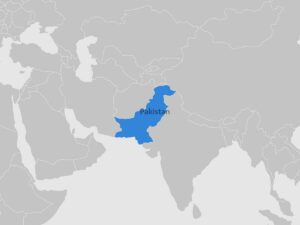
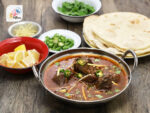
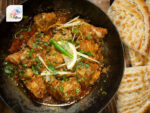
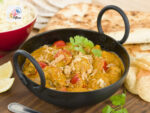
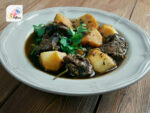
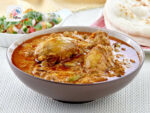
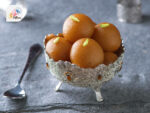
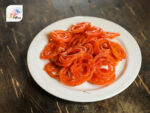
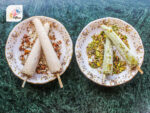
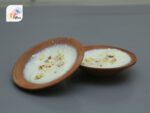
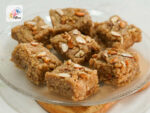
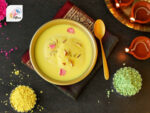
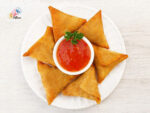
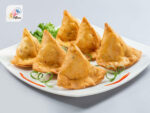
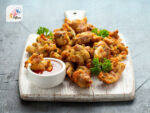
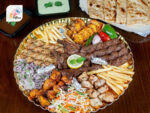
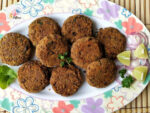
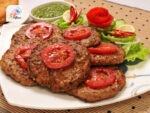
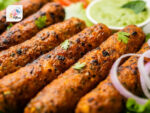
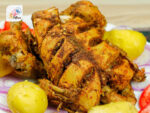
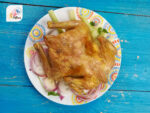
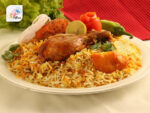
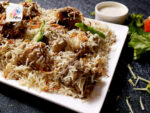
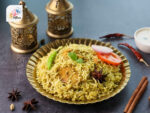
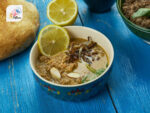
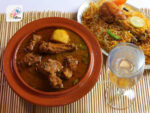
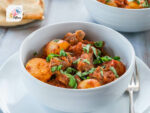
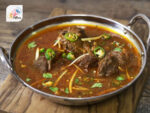
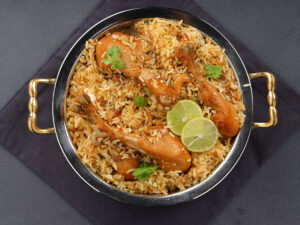
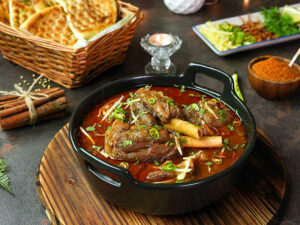
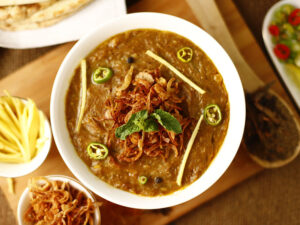
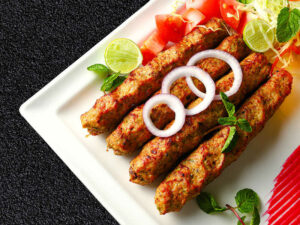
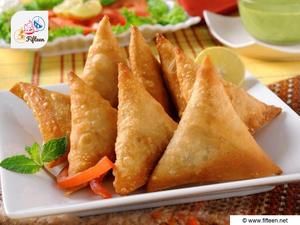
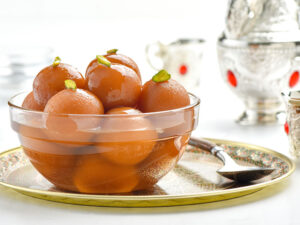
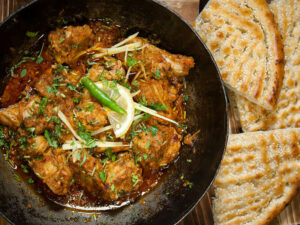
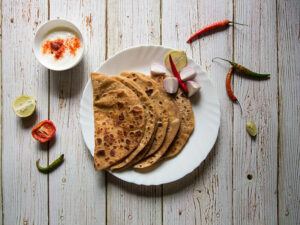
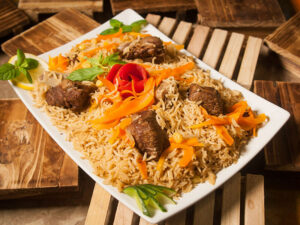
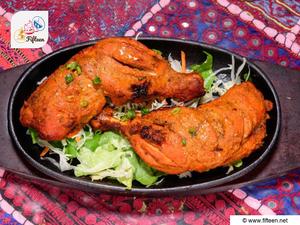
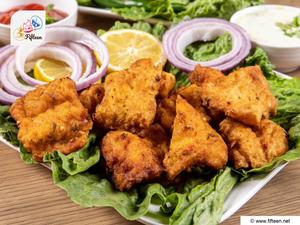
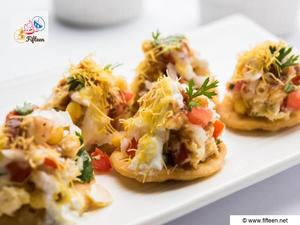
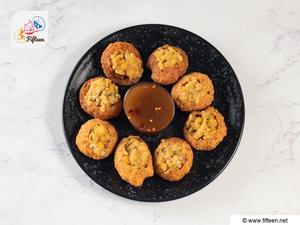
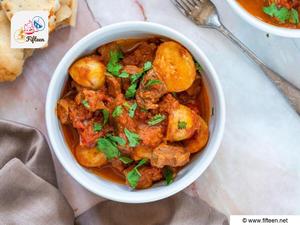
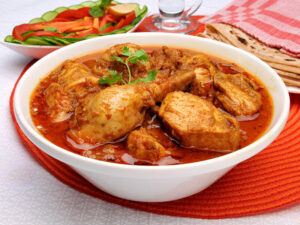
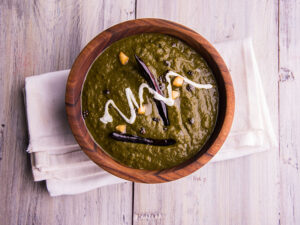
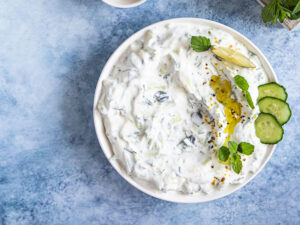
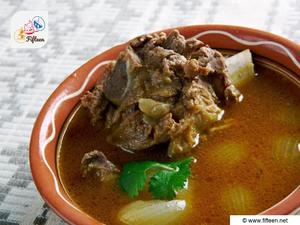
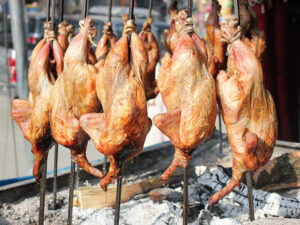
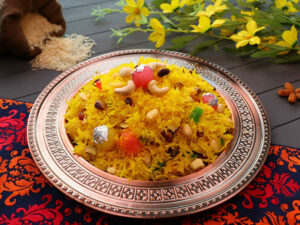
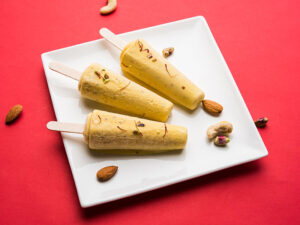
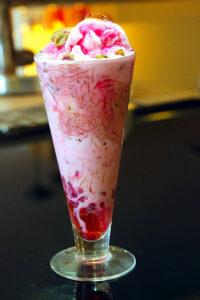
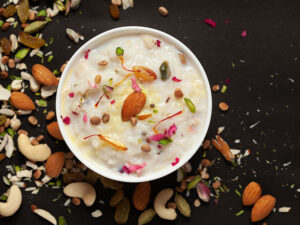
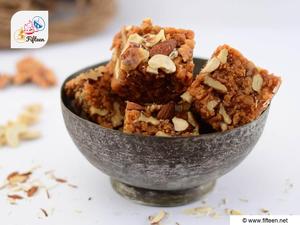
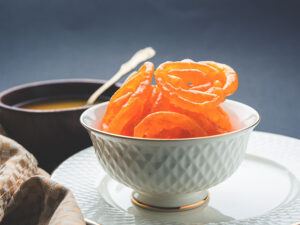
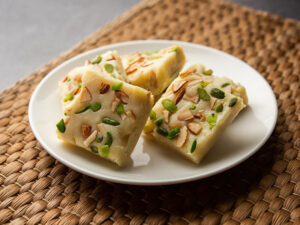
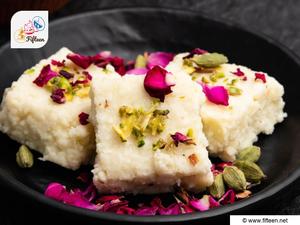
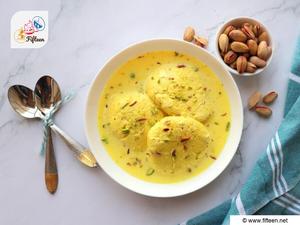
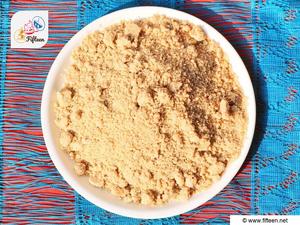
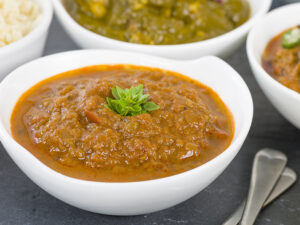
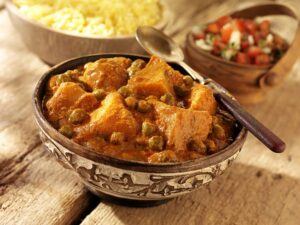
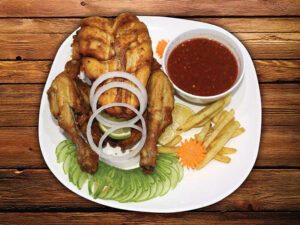
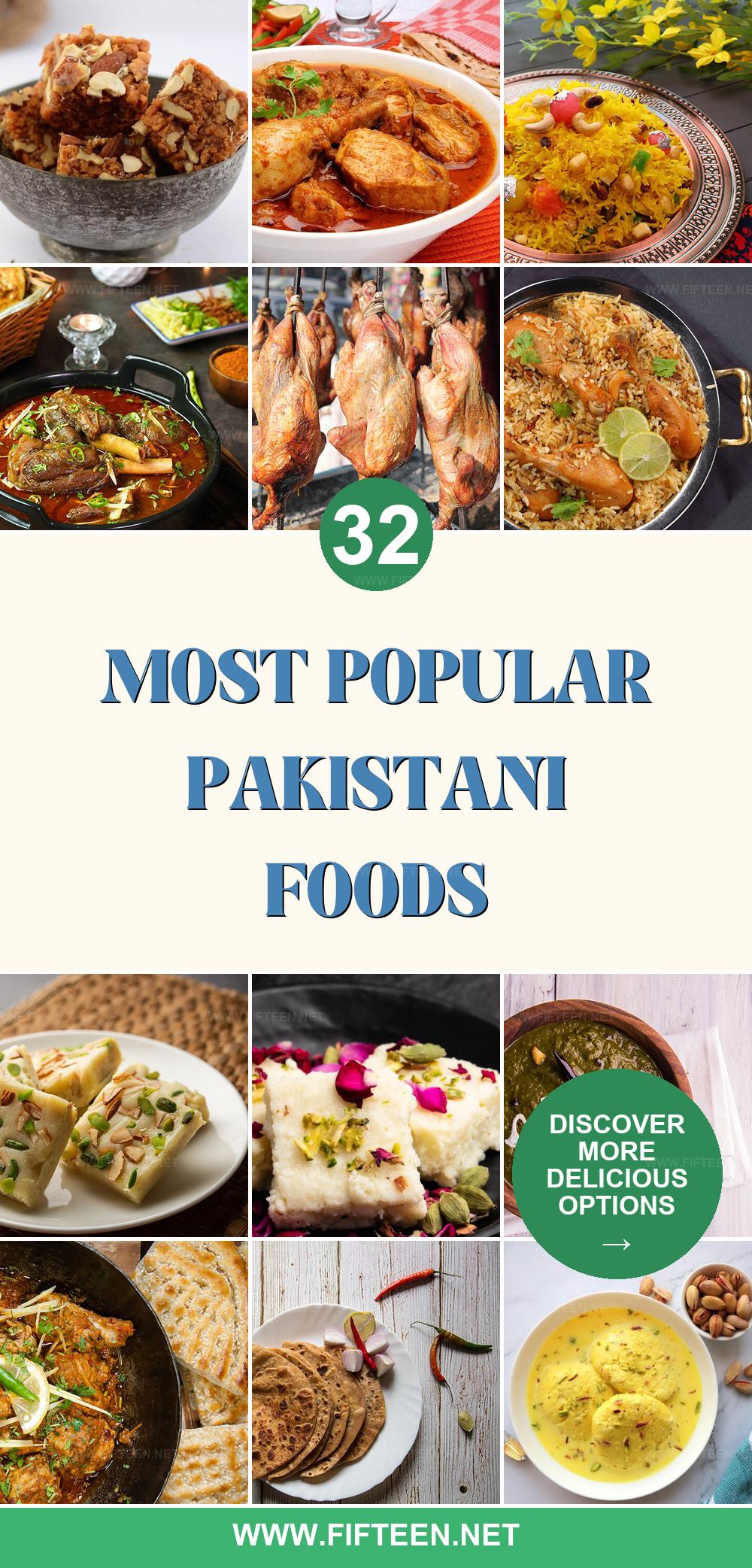
Jamie Scott
Editor in Chief, Senior Content Writer
Expertise
Home Cooking, Meal Planning, Recipe Development, Baking and Pastry, Food Editor, Cooking-video Maker, Western Food Evaluation Expert
Education
Le Cordon Bleu College of Culinary Arts
Local Community College, New York, NY
Jamie Scott is a skilled culinary expert and content creator specializing in Western cuisine. With over 15 years in the culinary field and formal training from Le Cordon Bleu, Paris, Jamie deeply understands how to blend nutrition with delicious flavors. His passion for cooking matches his commitment to making healthy eating accessible and enjoyable.
On Fifteen.net, Jamie brings a fresh perspective to classic dishes and beverages, offering readers insightful recipes, cooking tips, and a fresh view on meal planning that emphasizes taste, health, and simplicity.